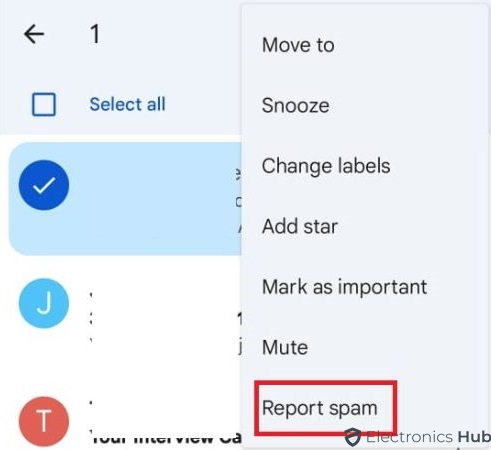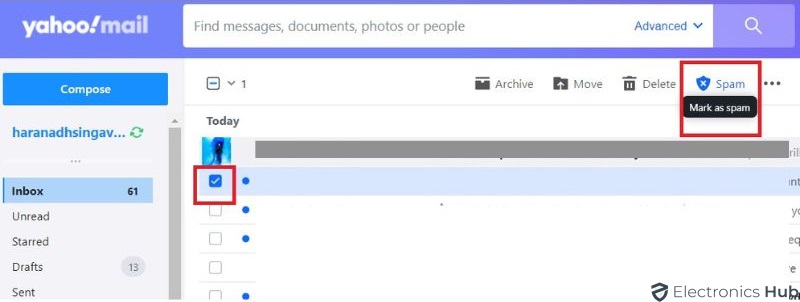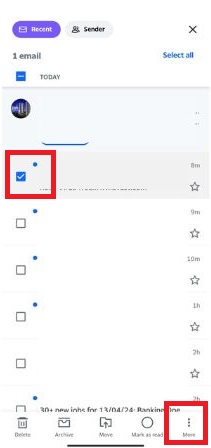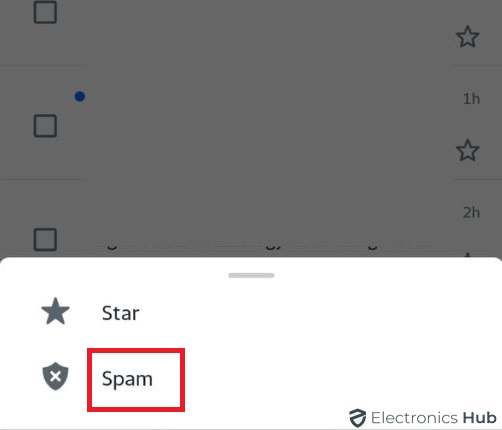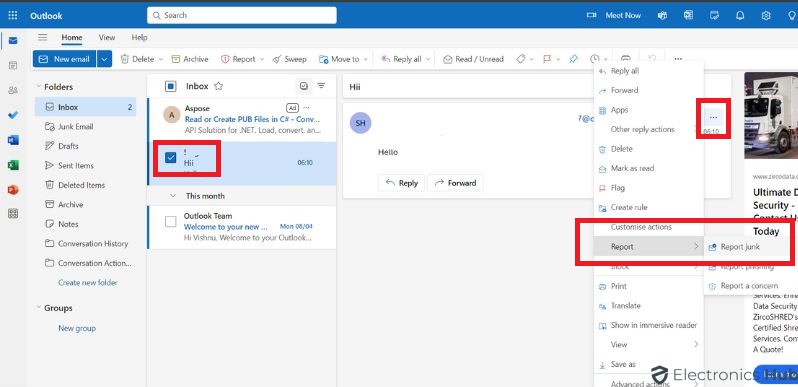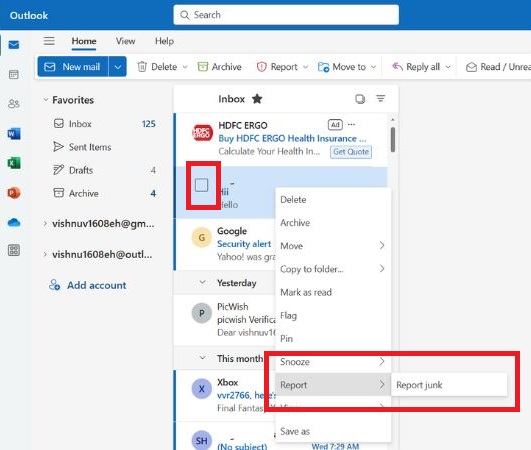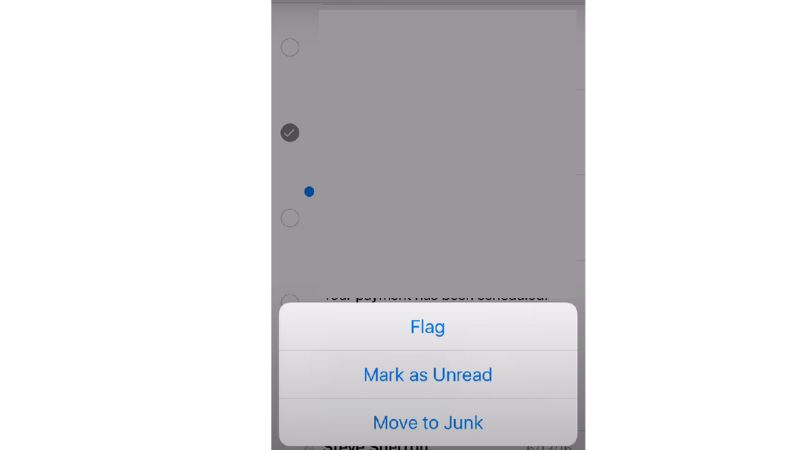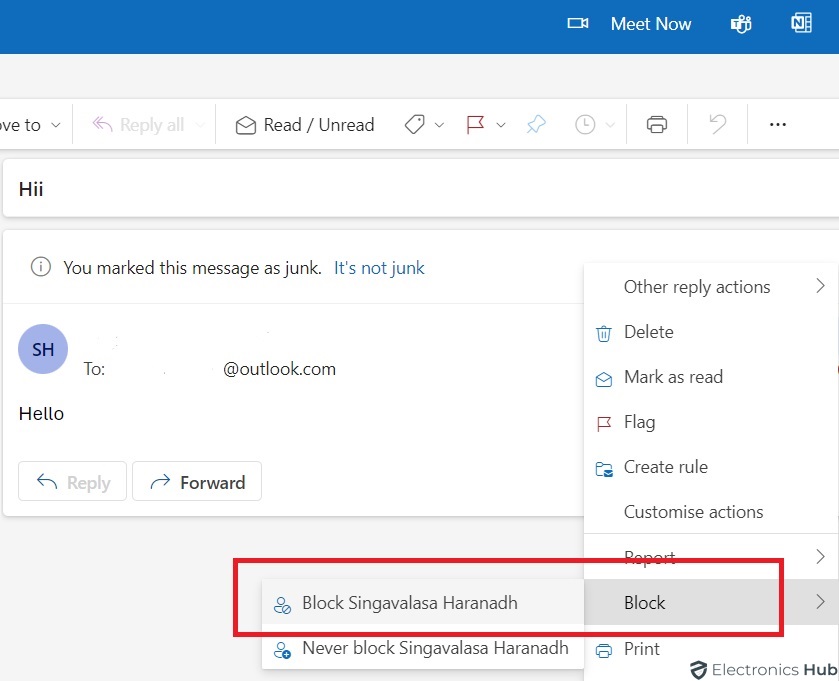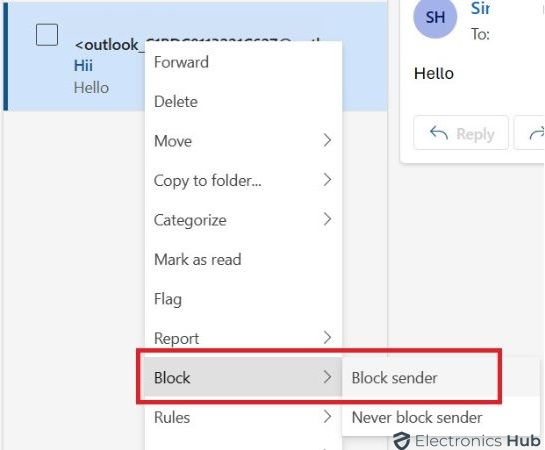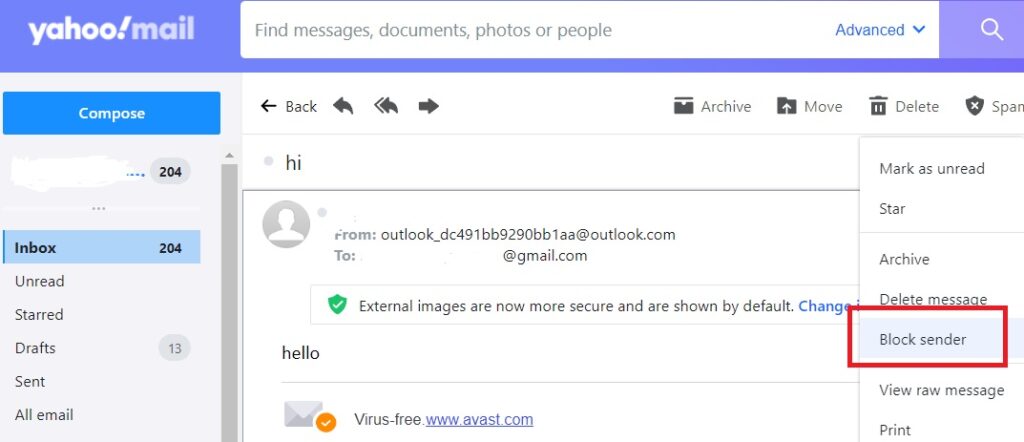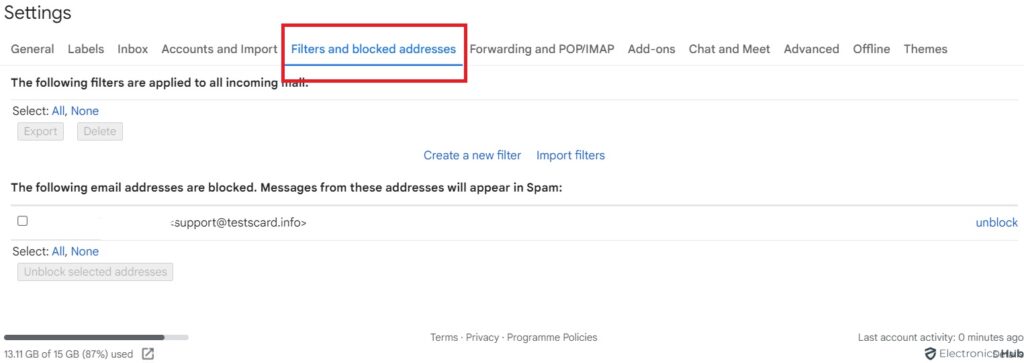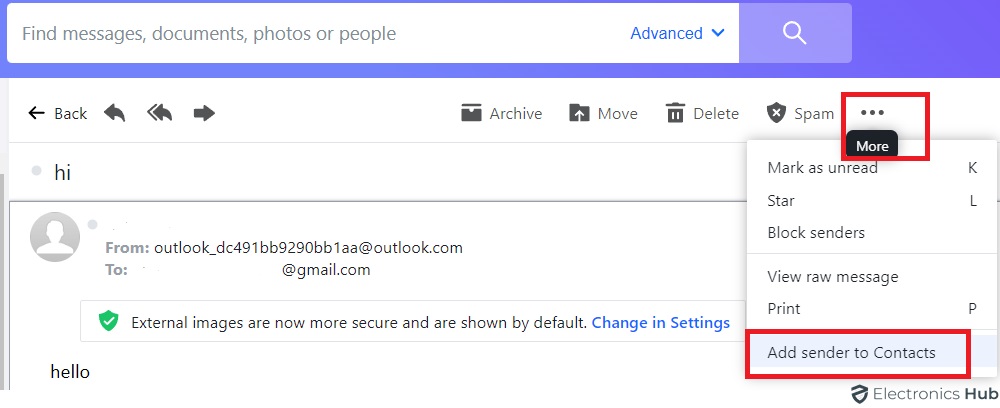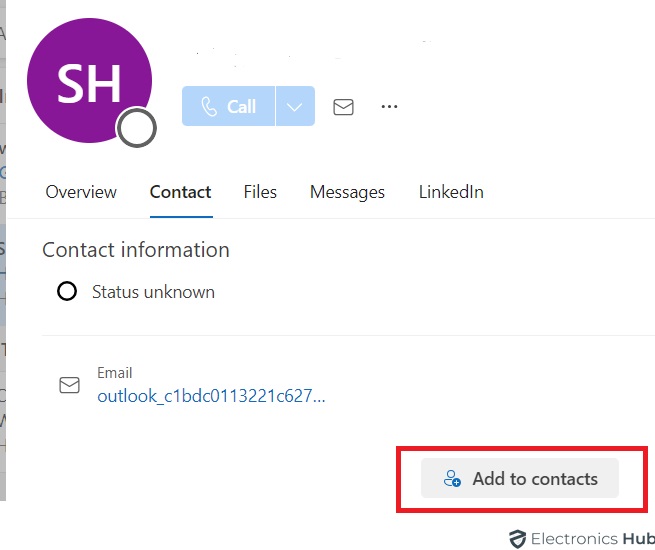Is your inbox overflowing with unwanted emails? Drowning in discount offers for products you’ll never buy and dubious get-rich-quick schemes? You’re not alone.
Spam emails are a constant nuisance, but what if we told you that there are quite a few ways to tackle this? In this blog post, we’ll equip you with the knowledge and tools to fight back. We’ll explore simple yet effective strategies to keep your inbox spam-free and restore your sanity. So, let’s reclaim your inbox and get you back to what really matters!
Outline
Toggle- 1. Train Your Spam Filter
- 2. Unsubscribe From Unwanted Messages
- 3. Block Spam Email Senders
- 5. Download 3rd-party Extensions To Stop Spam Emails
- 6. Don’t Respond To Spam Emails
- 7. Only Accept Emails From Known Senders
- 8. Protect Your Email Address
- 9. Change Your Email Address
- Frequently Asked Questions
- Conclusion
1. Train Your Spam Filter
Training your spam filter is a fundamental step in maintaining a productive and organized email environment. Spam emails not only clutter your inbox but can also harbor phishing attempts or malicious attachments.
When you consistently mark spam emails, you’re actively contributing to a more robust filtering system for yourself and all users of the email service. This collaboration helps the spam filter identify emerging spam tactics and block similar emails before they ever reach your inbox.
In reality, training your spam filter is an investment in your email security and efficiency. The more you train it, the better it becomes at filtering out unwanted messages, saving you valuable time and frustration.
Here’s how you can make it even smarter:
- Mark Spam as Spam: Most services have a “report spam” button or option. This trains the filter to recognize similar emails in the future and automatically shunt them to your spam folder, keeping your inbox clutter-free.
- Don’t just Delete: While it might seem faster to simply delete spam emails, taking a moment to mark them as spam is more beneficial in the long run. It helps the filter learn and improve its effectiveness over time.
How To Mark As Spam In Gmail?
On Your Computer
1. Open Gmail.
2. Find the email you want to report as spam. You can select one email or tick the checkbox next to several emails.
3. Look at the top toolbar above your emails. You’ll see a button with an exclamation mark in it. Click the button labeled “Report Spam”.
On Your Mobile Device (Android or iPhone)
1. Open the Gmail app.
2. Open the spam email you want to report.
3. Tap on the sender’s profile picture or avatar next to the email.
4. In the top right corner, you’ll see three vertical dots. Tap that menu icon.
5. From the menu, select “Report spam”.
How To Mark An Email As Spam In Yahoo?
Marking emails as spam in Yahoo Mail is similar to Gmail. Here’s how to do it:
On Your Computer
1. Log in to your Yahoo Mail account.
2. Go to your Inbox.
3. Select the checkbox next to the email(s) you want to mark as spam. You can select one or multiple emails.
4. Look at the toolbar above your inbox list. You’ll see a button with a shield icon and an “X” inside. Click the button labeled “Spam”.
On the Yahoo Mail Mobile app
1. Open the Yahoo Mail app on your phone or tablet.
2. Open the email you want to report as spam.
3. Tap the three vertical dots (…) in the top right corner or bottom right corner (depending on your device).
4. From the menu, select “Mark as spam”.
Just like with Gmail, marking emails as spam in Yahoo helps train their spam filters to identify similar emails in the future and keep them out of your inbox. Remember, don’t just delete spam – report it to improve Yahoo’s spam filtering for everyone.
How To Mark An Email As Spam In Outlook?
There are two main ways to mark an email as spam in Outlook, depending on whether you’re using the web version (Outlook.com) or the desktop application:
Marking Spam in Outlook.com (Web Version)
1. Open your Outlook.com inbox.
2. Select the email(s) you want to mark as spam. You can click on a single email or use the checkbox next to them to select multiple emails.
3. Look at the toolbar above your inbox list. You’ll see one of two options, depending on your interface:
4. A button labeled “Junk” or “Spam” – Click this button directly.
5. A button with three dots (…) – Click this button and then select “Junk” or “Report junk” from the menu.
6. The selected email(s) will be moved to your Junk folder.
Marking Spam In Outlook Desktop Application
1. Open the Outlook desktop application.
2. Find the email you want to mark as spam.
3. There are two ways to proceed:
4. Right-click the email: Select “Junk” or “Spam” from the right-click menu.
5. Use the toolbar buttons: Select the email and then click the “Junk” or “Junk Email” button in the toolbar (depending on your Outlook version).
6. The selected email will be moved to your Junk folder.
Additional Tips
- Report Phishing Emails: If you suspect an email is a phishing attempt (trying to steal your information), you can report it in addition to marking it as spam. In Outlook.com, look for the “Phishing” option after clicking the three dots (…) button.
- Block Senders: For particularly persistent spammers, you can block their email address entirely. This will prevent any future emails from them from reaching your inbox. Look for the “Block” option in the menu after right-clicking an email or selecting the email and using the toolbar options.
How To Mark Spam In Apple Mail
Apple Mail also offers ways to mark emails as spam and train its junk mail filtering system. Here’s how to do it on your Mac, iPhone, or iPad:
On Your Mac
1. Launch the Mail app.
2. Select the email message you want to report as spam.
3. There are two methods to move the email to Junk:
4. Click the “Junk” button in the Mail toolbar. This is usually located near the top of the Mail window.
5. Drag the email message to the Junk mailbox in the Mail sidebar.
On Your iPhone or iPad
1. Open the Mail app.
2. Locate the spam email you want to report.
3. Swipe left on the message. A menu will appear.
4. Tap “More” in the menu.
5. Select “Move to Junk” from the additional options.
2. Unsubscribe From Unwanted Messages
Unsubscribing from unwanted emails can help you manage inbox overload. Many companies and organizations include unsubscribe links in their emails. Taking a moment to unsubscribe can reduce the number of promotional emails you get.
But, be careful with unsubscribe links. Some spam emails may disguise themselves as legit messages with fake unsubscribe options. If you’re unsure about an email or sender, it’s safest to delete the message without clicking any links or replying.
Even if you manage your emails carefully, there may still be ones without clear unsubscribe options. In these cases, you can use your email provider’s spam filters or create filters to sort or delete these emails automatically. Combining unsubscribing with other strategies helps you focus your inbox on the important messages you want.
3. Block Spam Email Senders
Blocking spam email senders can help you deal with persistent or troublesome sources. This works best for senders you’ve never interacted with and who clearly send unsolicited spam. Although it won’t stop all spam (since spammers often use multiple addresses), it can cut down on emails from a specific source.
However, be careful not to block legitimate senders by mistake. Double-check the email address before blocking to make sure it’s not someone you want to hear from. If you’re unsure, marking the email as spam and letting your filter handle it might be safer. But for those you’re sure are spam, blocking is a good way to control your inbox and avoid future unwanted messages.
Blocking senders varies depending on your email provider, but usually involves opening a spam email, finding the sender’s address, and selecting a “block” option in the email menu. Taking the time to block repeat spammers can make your email experience more manageable.
Blocking Spam Email Senders By Email Provider
Gmail
1. Open a spam email from the sender you want to block.
2. Click the three vertical dots (…) displayed in the top right corner of the email, next to the “Reply” button.
3. Select “Block [sender name]” from the menu.
4. A confirmation popup will appear. Click “Block” to confirm.
Outlook.com (Web Version)
1. Open the spam email.
2. Look at the toolbar above your inbox list. You’ll see one of two options:
3. A button labeled “Junk” or “Spam” – Click this button directly.
4. A button with three dots (…) – Click this button and then select “Block” from the menu.
Outlook Desktop Application
1. Open the spam email.
2. Right-click the email and select “Block Sender” from the right-click menu.
3. Alternatively, select the email and click the “Junk” or “Junk Email” button in the toolbar (depending on your Outlook version). Then, click the “Blocked Senders” button and add the sender’s address if it’s not already listed.
Yahoo Mail
1. Open the spam email.
2. Look at the toolbar above your inbox list. You’ll see a button with a gear icon. Click that button.
3. From the menu, select “Block Sender” (or similar wording).
4. Enter the sender’s email address in the confirmation popup and click “Block”.
Apple Mail (Mac)
1. Open the spam email.
2. Click the sender’s name or email address at the top of the message.
3. In the dropdown menu that appears, select “Block This Contact”.
Apple Mail (iPhone/iPad)
1. Open the spam email.
2. Swipe left on the message.
3. Tap “More” in the menu that appears.
4. Select “Block this Sender” from the additional options.
4. Use An Alternative Email Address
While unsubscribing, filtering, and blocking senders are all effective strategies, another layer of defense against spam is using an alternative email address. This essentially creates a decoy email you can use for specific purposes, helping to keep your primary inbox free from clutter.
Here’s How it Works: Imagine you have your main email address, something like [email protected], that you use for close friends, family, and important accounts. You can then create a secondary email address, like [john.doe@gmailcom], specifically for online shopping or signing up for newsletters.
When you use the secondary address for less critical interactions, you avoid giving away your main email address to potential spammers. Many online stores or services will bombard you with promotional emails after signing up. If you use the secondary address for these purposes, your main inbox stays focused on important messages.
There are two main ways to create an alternative email address:
- Using a Free Email Service Provider: Many services like Gmail, Yahoo Mail, or ProtonMail allow you to create multiple email addresses under one account. This is a convenient option, but it’s important to remember that these free services might still be susceptible to spam filtering limitations.
- Using an Email Address Alias: Some email providers offer alias features. These let you create additional email addresses that forward to your main inbox. For instance, with Gmail, you can add a “+” symbol and some text after your username before the “@” symbol.
For example, if your main address is [john.doe@gmail.com], you could create an alias like [john.doe4321] for online shopping. Any emails sent to this address would still be delivered to your main inbox, but you’d easily be able to identify them as shopping-related.
5. Download 3rd-party Extensions To Stop Spam Emails
While built-in spam filters are a good first line of defense, you can explore additional security with third-party extensions for your email client. These extensions offer various features to bolster your spam filtering and can be particularly useful if you’re dealing with a persistent influx of spam.
Here are some things to consider when choosing a third-party extension:
- Compatibility: Make sure the extension works with your email provider (Gmail, Outlook, Yahoo Mail, etc.) and your email client (web browser, desktop application).
- Features: Different extensions offer varying functionalities. Some specialize in advanced spam filtering with superior detection rates, while others might focus on privacy protection or phishing email identification. Choose an extension that aligns with your specific needs.
- Reputation: Opt for extensions with a good reputation from trusted developers. Read reviews and check user ratings before installing any extension.
Keep in mind that third-party extensions can sometimes interfere with legitimate emails or functionalities of your email client. Be cautious and only install extensions from reputable sources. It’s also wise to monitor your inbox after installing a new extension to ensure it’s not accidentally filtering out important messages.
Examples Of Third-Party Extensions For Popular Email Providers
1. Gmail Extensions
- Spam Bully: Boasts advanced spam filtering with features like real-time blacklists that constantly update to identify the latest spam tactics. It also provides customization options, allowing you to tailor the filtering process to your preferences.
- Block Sender: For users seeking a straightforward solution to eliminate unwanted senders, Block Sender offers a simple yet effective approach. With a few clicks, you can block senders from bombarding your inbox with future emails.
2. Outlook Extensions (Considerations for Outlook Webmail)
While there are fewer extensions specifically designed for Outlook, some browser extensions can work effectively with Outlook webmail.
Here are two possibilities to consider:
- Mailwasher: This extension goes beyond standard spam filtering by offering features like previewing email content before downloading attachments. This can be a valuable security measure, as malicious attachments are a common way for hackers to infiltrate your system.
- SPAMfighter: Provides a comprehensive solution, encompassing both spam filtering and email security features to safeguard your inbox.
6. Don’t Respond To Spam Emails
Responding to spam emails is a surefire way to open a can of worms and invite even more trouble into your inbox. Here’s why it’s best to leave spam messages on read:
- Spammers thrive on confirmation: Spammers rely on automated programs that trawl the internet for active email addresses. Any response you send, even an angry reply or an unsubscribe request (on a dubious unsubscribe link), confirms your email address is valid. This verification can elevate you to the top of spammer lists, resulting in a significant increase in unwanted emails.
- Imagine a spammer casting a wide net. Any response you send is like swimming into the net, making yourself a much easier target for future spam campaigns.
- Spam emails often harbor hidden threats: Many spam emails contain malicious attachments or links disguised as legitimate downloads or enticing offers. Clicking on these links or downloading attachments can wreak havoc on your device. These links might be phishing attempts, cleverly crafted to steal your personal information like passwords or credit card details. Malicious attachments, on the other hand, can install malware onto your computer, potentially compromising your entire system and sensitive data.
7. Only Accept Emails From Known Senders
While adopting a policy of “known senders only” might seem ideal for eliminating spam, it’s not entirely practical. Here’s why:
- Missed Opportunities: Many legitimate emails, like notifications from banks, social media platforms, or online services you use, might come from unfamiliar senders initially. If you strictly block or delete emails from unknown addresses, you could miss important updates or verification messages.
- Inconvenience: Constantly vetting senders can be a time-consuming hassle. Imagine waiting for an email confirmation from a new online store you just signed up with, only to have it land in your spam folder because you haven’t whitelisted their address yet.
However, there are ways to achieve a balance:
- Use Caution: While deleting emails from unknown senders might be a bit extreme, it’s wise to exercise caution when opening messages from unfamiliar addresses. Don’t click on links or attachments right away. Carefully examine the sender’s email address for any irregularities or typos. If something seems suspicious, err on the side of caution and delete the message.
- Check Your Spam Folder Regularly: Since some legitimate emails might accidentally get flagged as spam, it’s a good practice to periodically review your spam folder. This way, you can ensure you’re not missing important messages from senders you don’t necessarily recognize yet.
- Whitelist Important Contacts: As you interact with new senders and confirm their legitimacy, you can add them to your whitelist or address book. This ensures their future emails bypass your spam filter and land safely in your inbox.
Adding Known Senders To Different Email Providers
Here’s a breakdown on how to add known senders to your safe list or address book across popular email providers:
How To Add Known Senders In Gmail
We already explored two methods for Gmail
- Using Filters and Blocked Addresses: This method allows you to create a filter specifically for whitelisting senders or entire domains.
- Adding from an Email: This is a quick way to whitelist a sender directly from an email they sent you.
How To Add Known Senders In Yahoo
Yahoo Mail
1. Open a message from the sender you want to whitelist.
2. Click on the sender’s name or email address at the top of the message.
3. A small menu will appear. Select “Add to Contacts” or similar wording.
How To Add Known Senders In Outlook
Outlook.com (Web Version)
1. Open an email from the sender you want to whitelist.
2. Right-click on the sender’s name or email address.
3. From the menu, select “Add to Contacts”.
Outlook Desktop Application
1. Open an email from the sender you want to whitelist.
2. Click on the sender’s name or email address.
3. In the contact card that appears, click “New Contact” or “Add to Contacts”.
How To Add Known Senders In Apple Mail
Apple Mail (Mac)
1. Open an email from the sender you want to whitelist.
2. Click on the sender’s name or email address at the top of the message.
3. In the dropdown menu that appears, select “Add to Contacts”.
Apple Mail (iPhone/iPad)
1. Open an email from the sender you want to whitelist.
2. Tap on the sender’s name or email address.
3. In the contact card that appears, tap “Add Contact”.
8. Protect Your Email Address
Protecting your email address is a fundamental step in minimizing spam. Here’s how to be more cautious about where you share it:
Many websites require email addresses for registration or account creation. Scrutinize the legitimacy of the website before submitting your email. Avoid providing your address on unfamiliar or sketchy websites. If a website seems suspicious or the request for your email appears unnecessary, err on the side of caution and don’t share it.
When possible, explore alternatives to using your primary email address for online interactions. Many websites allow you to sign up using social media accounts or offer phone number verification options. If the email address field seems optional and the website is trustworthy, consider using a temporary email address or creating a secondary email address specifically for such purposes. This helps to safeguard your main inbox from the influx of spam that can sometimes follow online registrations.
9. Change Your Email Address
Considering a new email to escape spam may seem like a good idea, especially if spam has been bothering you. But before you make the switch, think about these points:
- Disruption and Hassle: Getting a new email means updating all your accounts and telling everyone in your contacts. It’s a lot of work, and you might miss important contacts during the switch.
- Temporary Fix: Sadly, spammers don’t give up easily. Even with a new email, spam will likely find its way back to you, especially if you keep signing up for stuff online.
Instead of changing your email, it’s better to focus on other ways to deal with spam. Things like using filters, blocking senders, and having a separate email for subscriptions can help you manage spam better in the long run.
Frequently Asked Questions
Don’t just delete them! Mark them as spam. This trains your email provider’s spam filter to recognize similar emails in the future.
Many legitimate emails have unsubscribe buttons. Look for these at the bottom of the email. If you can’t find one, you can reply to the email with “unsubscribe” in the subject line.
Consider using a third-party spam filter. These work alongside your email provider’s filters to offer extra protection.
No! Responding to spam can confirm your email address is valid, leading to more spam.
Avoid using your main email address when signing up for online accounts or services. Or, consider creating a separate email address for these purposes.
While not ideal for everyday use, some email services allow you to set up filters to only accept emails from addresses in your contact list.
This is a last resort. Changing your address can be inconvenient, and there’s no guarantee it won’t get spammed eventually.
Many email providers have privacy settings that allow you to control how your email address is shared. Check your settings to see if you can opt-out of sharing with third parties.
Watch out for generic greetings, urgency or scare tactics in the subject line, misspelled words, and grammatical errors.
Conclusion
We hope this information helps you reclaim your inbox from the clutches of spam! Do you have any other questions about managing your email? Leave a comment below and let us know!


